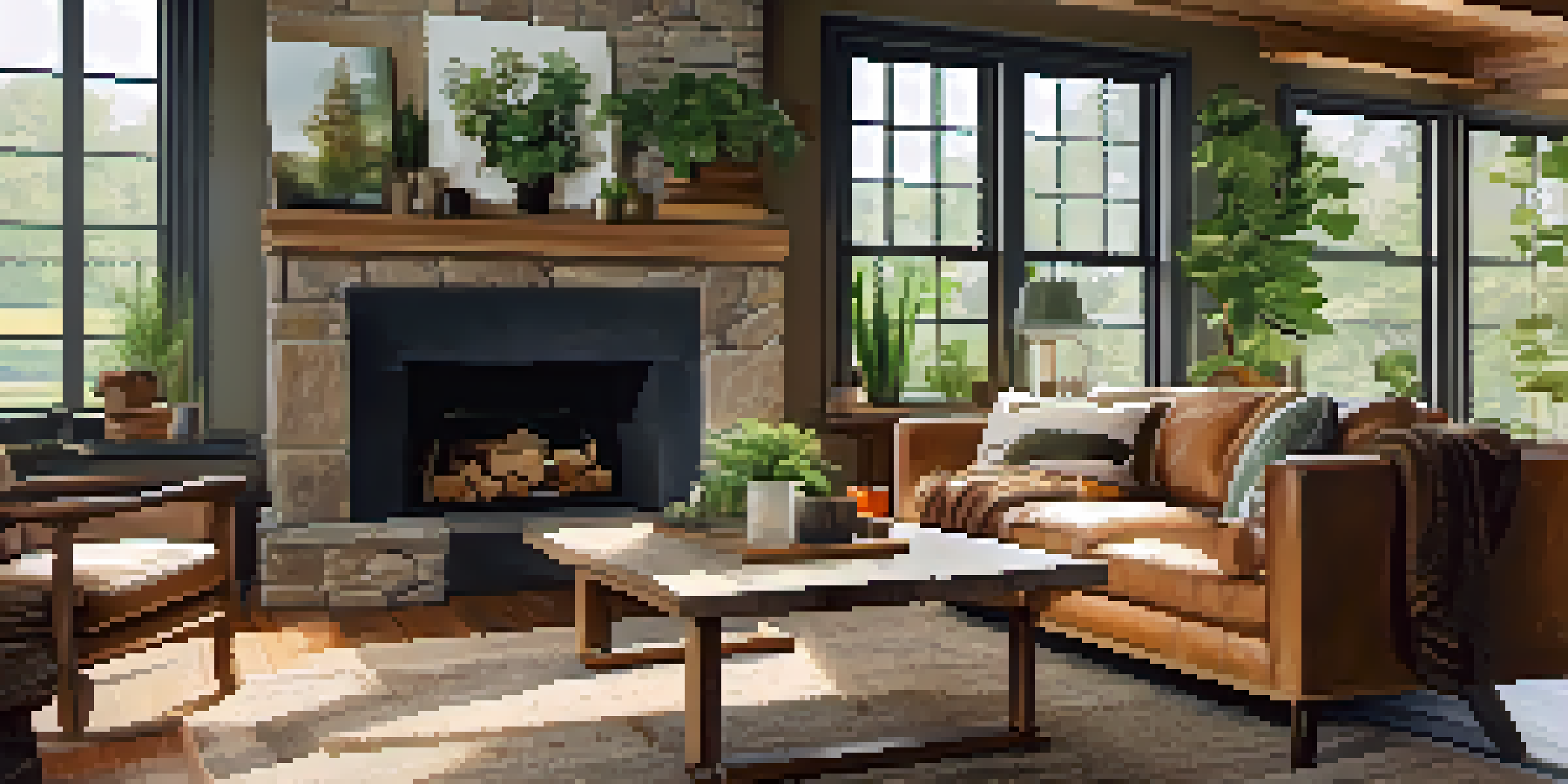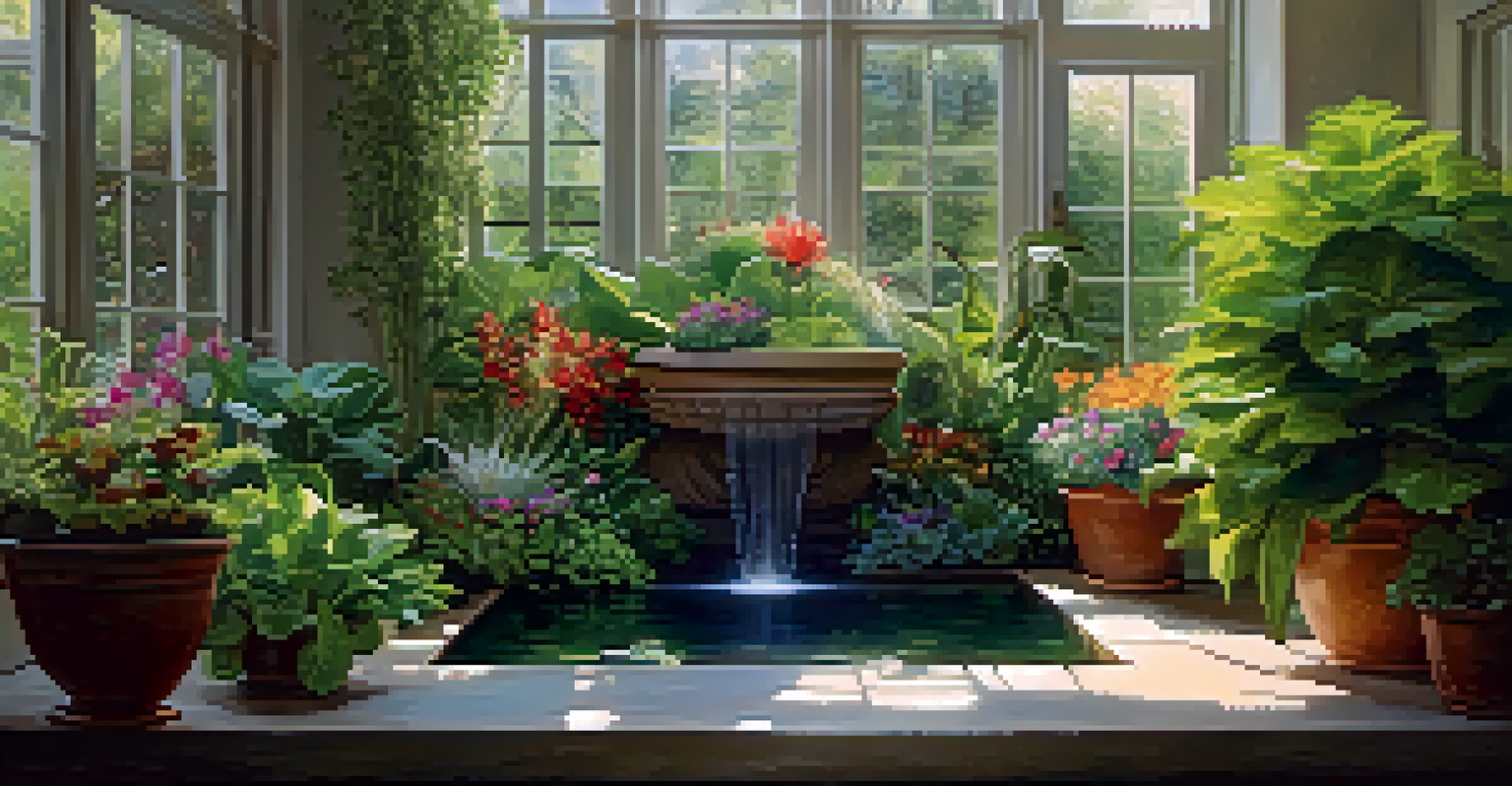Biophilic Design: Integrating Nature in Future Homes

Understanding Biophilic Design and Its Importance
Biophilic design is an approach that seeks to connect our living spaces with nature. This concept stems from the idea that humans have an innate desire to be close to the natural world, and it can significantly enhance our well-being. By integrating natural elements into our homes, we can create spaces that not only look good but also improve our mental and physical health.
The clearest way into the Universe is through a forest wilderness.
Imagine walking into a room filled with natural light, plants, and organic materials. This kind of environment can reduce stress levels and promote a sense of calm—a much-needed relief in today’s fast-paced world. Studies show that incorporating biophilic elements can lead to increased productivity and creativity, making it a smart choice for both residential and commercial spaces.
As we move towards the future, the importance of biophilic design is only expected to increase. With urbanization on the rise and green spaces dwindling, creating homes that foster a connection to nature is essential. This approach not only benefits us as individuals but also contributes to a more sustainable and harmonious relationship with our environment.
Key Principles of Biophilic Design
At its core, biophilic design revolves around a few key principles aimed at replicating the benefits of nature. One of these principles is the use of natural light, which can transform a space by enhancing mood and reducing energy costs. Large windows, skylights, and open layouts can help bring the outside in, creating a more inviting atmosphere.

Another principle involves incorporating natural materials such as wood, stone, and water. These elements not only add aesthetic value but also evoke feelings of warmth and comfort. For instance, a wooden accent wall or a small indoor fountain can serve as focal points while reinforcing the connection to nature.
Biophilic Design Enhances Well-Being
Incorporating natural elements into our homes can significantly improve mental and physical health.
Lastly, biophilic design promotes biodiversity through the integration of plants and green spaces. Indoor gardens, vertical planters, and strategically placed potted plants can purify the air and create a more vibrant living environment. This approach encourages homeowners to embrace the beauty of nature in their everyday lives.
Benefits of Biophilic Design in Homes
The benefits of biophilic design extend far beyond aesthetics; they touch on our health and happiness. Research indicates that homes designed with biophilic principles can lead to reduced stress, improved mood, and overall better mental health. For instance, spending time in nature has been shown to lower cortisol levels, a hormone associated with stress.
Nature does not hurry, yet everything is accomplished.
Additionally, biophilic design can enhance physical health. Natural light can boost vitamin D levels, while the presence of plants can improve air quality, leading to fewer respiratory issues. Homeowners who prioritize these elements often find themselves feeling more energized and revitalized in their own spaces.
Ultimately, incorporating biophilic design into our homes can lead to a more fulfilling lifestyle. As we cultivate environments that nurture our connection to nature, we create spaces that not only serve as shelters but also as sanctuaries that promote well-being and harmony.
Examples of Biophilic Design in Action
There are numerous ways to implement biophilic design in your home, and each approach can be tailored to fit individual preferences. One popular example is the use of indoor plants, which can range from small succulents on a windowsill to larger leafy greens that create lush focal points in living areas. These plants not only add beauty but also serve as natural air filters.
Another example is the incorporation of water features, such as a small indoor fountain or aquarium. The sounds of flowing water can be incredibly soothing, providing a calming ambiance that mimics the tranquility of nature. This can create a peaceful retreat where one can unwind after a long day.
Key Principles Foster Nature Connection
Using natural light, materials, and plants helps create inviting spaces that mimic the benefits of nature.
Additionally, consider using natural materials for furniture and decor. Reclaimed wood tables, stone countertops, and organic textiles can all contribute to a warm, inviting atmosphere. By choosing pieces that reflect the beauty of nature, homeowners can create a cohesive design that feels both stylish and grounded.
Challenges in Implementing Biophilic Design
While the benefits of biophilic design are clear, there are challenges that homeowners may face when trying to incorporate this approach. One common obstacle is space limitations in urban environments, where access to natural elements may be restricted. However, even small adjustments, like adding a few plants or using light-colored furnishings, can make a significant difference.
Budget constraints can also pose a challenge. Many biophilic design elements, such as large windows or custom-built features, can be expensive. However, there are cost-effective alternatives, such as utilizing existing spaces creatively or sourcing affordable decor that embodies natural aesthetics.
Lastly, maintaining these natural elements requires commitment and care. Indoor plants need watering and sunlight, while natural materials may require regular upkeep. By embracing this commitment, however, homeowners can enjoy the long-term benefits of a space that feels alive and connected to the environment.
The Future of Biophilic Design in Architecture
As we look to the future, biophilic design is likely to play a pivotal role in architecture and home building. Developers and architects are increasingly recognizing the value of creating spaces that prioritize a connection to nature. This shift not only meets the desires of homeowners but also aligns with sustainable building practices.
Innovative designs that incorporate green roofs, living walls, and natural ventilation are becoming more common. These features not only enhance the aesthetics of a building but also contribute to energy efficiency and environmental sustainability. In this way, biophilic design and eco-friendly practices go hand in hand.
Future Trends in Sustainable Design
Biophilic design is becoming essential in architecture, promoting a harmonious relationship between urban living and nature.
Ultimately, the future of biophilic design will be shaped by our growing understanding of its benefits. As communities prioritize mental health, well-being, and environmental responsibility, we can expect to see more homes and public spaces that embrace the principles of biophilia, creating a harmonious balance between nature and urban living.
Getting Started with Biophilic Design in Your Home
If you're inspired to incorporate biophilic design into your own home, start small. Begin by adding a few plants to your space, whether it’s a small herb garden in the kitchen or a towering fiddle leaf fig in the living room. Every little bit helps create a more inviting atmosphere that reflects your connection to nature.
Next, consider how you can enhance natural light in your home. Simple changes like using sheer curtains or rearranging furniture to allow more sunlight in can make a big difference. If possible, think about larger renovations like adding skylights or large windows to bring in even more light.

Lastly, take the time to choose natural materials for your furniture and decor. Look for items made from sustainably sourced wood, organic fabrics, or even handmade crafts that showcase the beauty of nature. With each choice, you’ll be contributing to a home that feels more alive and connected to the world around you.